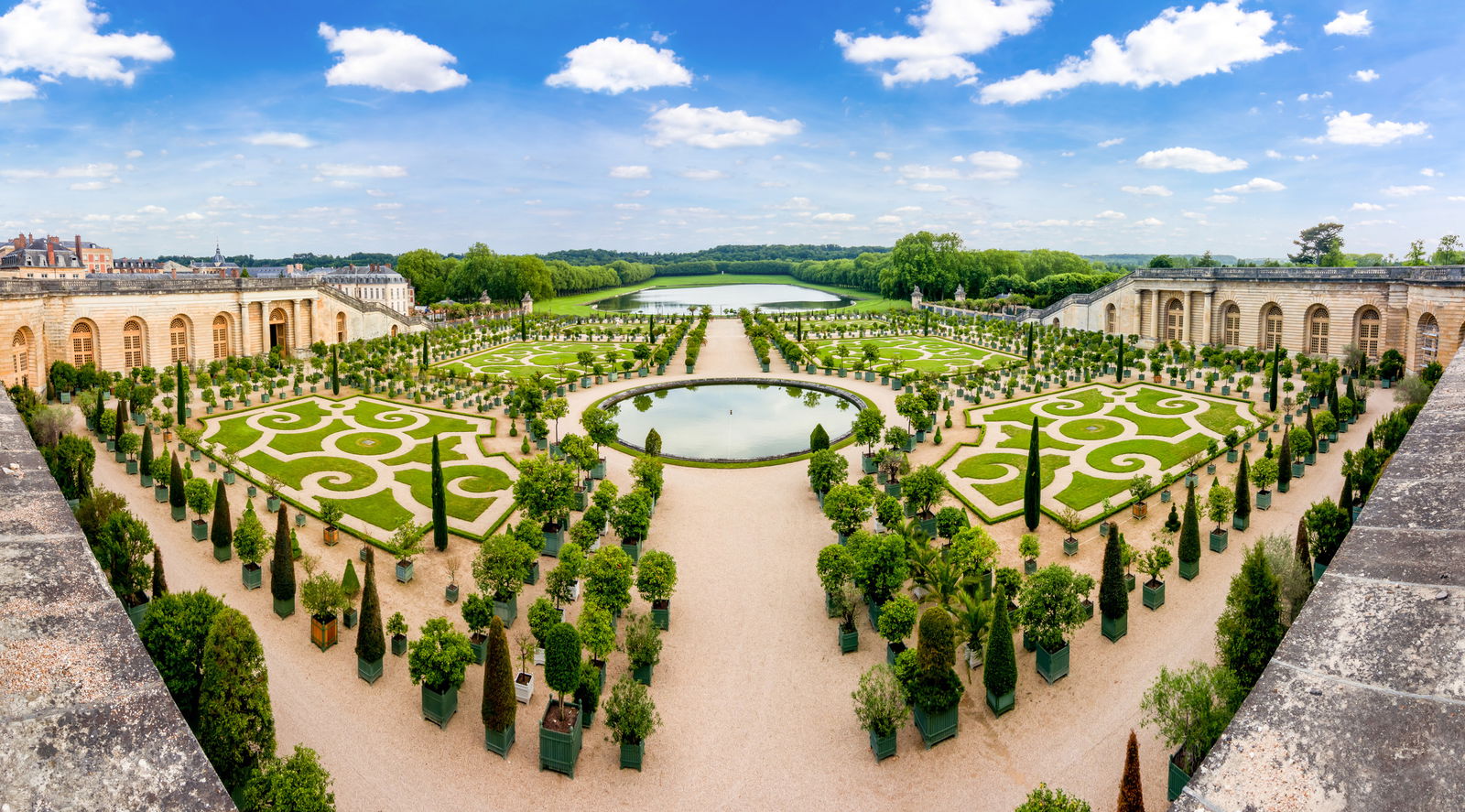


Versailles, a magnificent city located just southwest of Paris, is renowned for its opulent palace, awe-inspiring gardens, and historical significance. Once the seat of French royalty, Versailles offers visitors a glimpse into the grandeur and extravagance of the French monarchy.
Versailles' awe-inspiring palace, exquisite gardens, and historical significance make it a must-visit destination for those seeking to step back in time and experience the opulence of the French monarchy. Whether you're marveling at the palace's grandeur, strolling through the majestic gardens, or learning about the rich history within its walls, Versailles promises an unforgettable and regal experience that will leave you in awe of its grand legacy.
The Palace of Versailles is the main attraction and a UNESCO World Heritage site. Built by King Louis XIV in the 17th century, the palace is a masterpiece of French Baroque architecture and a symbol of absolute monarchy. Explore the opulent State Apartments, the Hall of Mirrors with its breathtaking mirrors and chandeliers, and the Royal Chapel.
The Palace is surrounded by the iconic Gardens of Versailles, designed by famed landscape architect André Le Nôtre. These vast, impeccably manicured gardens feature ornamental lakes, fountains, sculptures, and numerous groves and pathways that lead to hidden corners and surprises.
A short walk from the main palace is the Petit Trianon, a smaller château commissioned by Louis XV for his mistress. Later, it became a private retreat for Marie-Antoinette, the queen. Adjacent to the Petit Trianon is Marie-Antoinette's Estate, comprising the charming Hameau de la Reine (Queen's Hamlet), a rustic village where the queen sought a simpler rural life.
During certain times of the year, visitors can enjoy the Musical Fountains Show and the Musical Gardens. These events feature a delightful display of synchronized fountains set to classical music, adding an enchanting ambiance to the already splendid gardens.
Built by Louis XIV as a retreat away from the formalities of the main palace, the Grand Trianon is an elegant and understated château with beautiful gardens. It served as a residence for subsequent French rulers, including Napoleon Bonaparte.
Versailles is steeped in history and has witnessed significant events that shaped France's destiny. The Palace of Versailles was the setting for the signing of the Treaty of Versailles, which formally ended World War I in 1919.

Versailles in winter is a quieter time to visit the famous Palace of Versailles and its enchanting gardens. The temperatures range from the 30s to 40s Fahrenheit, so be sure to dress warmly for exploring the expansive grounds. While some outdoor features may be limited, the stunning interior of the palace offers a glimpse into the opulent lives of the French monarchy. Winter allows for a more serene experience without the peak tourist crowds.

Spring brings new life to Versailles, with the gardens bursting with blossoms and vibrant colors. The temperatures rise to the 50s and 60s Fahrenheit, making it a pleasant time to explore both the palace and its vast gardens. Spring is an ideal season to witness the beautiful fountains and enjoy leisurely walks through the meticulously landscaped grounds.

Versailles's summer is a popular time to visit, attracting crowds from around the world. The temperatures climb to the 70s and 80s Fahrenheit, providing excellent weather to explore the palace's interiors and its well-manicured gardens. Be prepared for longer waiting times and larger crowds during this peak tourist season.

Fall in Versailles is a picturesque time as the foliage around the palace changes into warm autumn hues. The temperatures cool down to the 50s and 60s Fahrenheit, making it pleasant for outdoor activities. Fall offers a more peaceful experience to enjoy the palace and its gardens, with fewer tourists compared to the summer months. It's an excellent time for photography enthusiasts to capture the beauty of Versailles in its autumn splendor.
